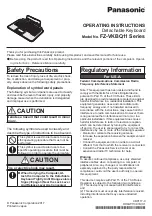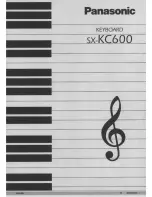
Combination mode
382
Delay
Delay Start
[Off, Fixed, 64T …4x1]
Delay Start Fixed
[0000ms…5000ms]
Please see “Delay” on page 108.
Note
Note Trigger
[Any, AKR, 1st, Dyn]
Please see “Note Trigger” on page 109.
Note Latch
[Off, On]
Please see “Note Latch” on page 109.
Note:
In Combination mode, this can be turned on/off
for each KARMA Module. A KARMA Module for
which this is On (checked) will be in a Latch On
condition when the LATCH switch is on (LED lit).
Envelope1, Envelope2, Envelope3
Trigger
[Any, AKR, 1st, Dyn]
Latch
[Off, Sus1, Rel1, Sus2, Rel2]
Please see “Envelope1, Envelope2, Envelope3” on
page 109.
Module Trigger
Note and envelope triggering of a KARMA Module
can be controlled by the operation of another KARMA
Module.
Trigger By Module
[Off, A, B, C, D]
When the KARMA Module you specify here advances
by the length specified in “GE Phrase Length,” the
KARMA Module itself will be triggered automatically,
starting the phrase or pattern.
For example you could make settings so that harp
glissando phrases specified for each KARMA Module
are triggered consecutively. Alternatively, you could
make settings so that the four KARMA Modules are
connected in series, and play repeatedly.
GE Phrase Length
[000…100%]
Specifies a percentage of a Module’s overall GE Phrase
Length after which triggering of this Module will
occur. When the KARMA Module chosen above
advances by the percentage of length specified here,
this Module will be automatically triggered.
This is valid except when
Trigger By Module
is Off.
Setting a Module to be triggered by a percentage of
its own phrase will have no additional effect.
Note:
The actual overall GE Phrase Length is
determined by the number of Phase Pattern Steps, the
Phase Length Mode, and various other internal GE
settings.
Cutoff Module A, B, C, D
[Off, On]
When this Module’s effect is triggered, it can cutoff any
effects that are playing on the specified Modules.
This is mainly for use when you do not want effects
from the Modules overlapping each other, but want
them to appear continuous (i.e. 4 sax riffs, 4 different
strumming effects, etc.). For example, you could
trigger different Modules in separate areas of the
keyboard, and only have one playing at any particular
time.
This can also be used to cycle back and forth between
Modules, with each Module shutting off the previous
Module when it is triggered in.
▼
7–4: Page Menu Commands
The number before each command shows its ENTER +
number-key shortcut. For more information on these
shortcuts, see “ENTER + 0-9: shortcuts for menu
commands” on page 138.
• 0:
Write Combination
. For more information, see
“Write Combination” on page 405.
• 1:
Exclusive Solo
. For more information, see
• 2:
Copy KARMA Module
. For more information,
see “Copy KARMA Module” on page 408.
• 3:
Initialize KARMA Module
. For more
information, see “Initialize KARMA Module” on
page 409.
• 4:
Copy Scene
. For more information, see “Copy
• 5:
Swap Scene
. For more information, see “Swap
• 6:
Capture Random Seed
. For more information,
see “Capture Random Seed” on page 409.
• 7:
Copy From Program
. For more information, see
Summary of Contents for Electronic Keyboard
Page 1: ...Parameter Guide Parameter Guide ...
Page 2: ......
Page 180: ...Program mode EXi 170 ...
Page 290: ...EXi STR 1 Plucked String 280 ...
Page 572: ...Sequencer mode 562 ...
Page 700: ...Global mode 690 ...
Page 751: ...Insert Effects IFX1 IFX12 Routing 741 Fig 2 3a Fig 2 3b ...
Page 902: ...Effect Guide 892 ...
















































